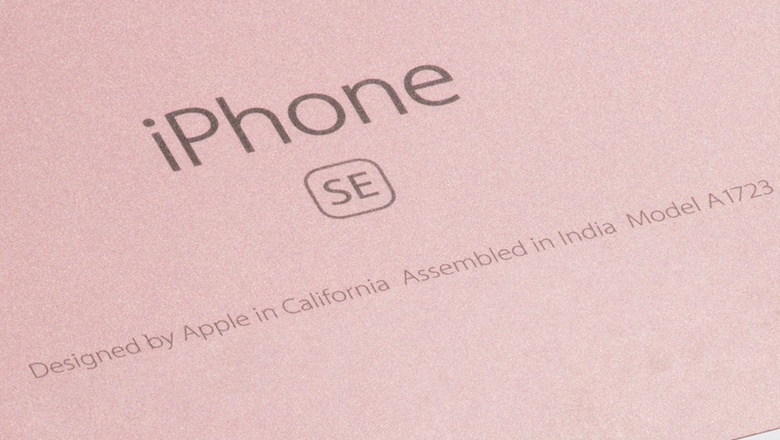
views
Apple has just registered what can only be described as a fantastic quarter for the company. The quarterly revenue for the October-December 2019 period of $91.8 billion is an increase of 9 percent from the year-ago quarter and also an all-time record. This is actually more than Apple’s own estimates which expected revenue between $85.5 billion and $89.5 billion for the quarter. The iPhone sales were up, services clocked higher sales and wearables saw significant growth too. There are now 1.5 billion active installed Apple devices globally.
A quick look at the numbers tells us that the iPhone sales clocked in $56 billion in the quarter for Apple, compared with $52 billion in the same period in 2018. Clearly, the iPhone 11, iPhone 11 Pro and the iPhone 11 Pro Max have proved to be more than capable updates to the iPhone XS, iPhone XS Max and even the iPhone XR. Wearables that include the Apple Watch and AirPods registered more than $10 billion, up from $7.3 billion the year before. The new AirPods, particularly the AirPods Pro have been received well while the Apple Watch continues to be popular. Services, which have been critical for Apple over the past few years, also grew—almost $13 billion in revenue, up from $11 billion the year before. At this time, services now include the Apple TV+ streaming service, but the company hasn’t given the subscriber base numbers just yet. There is also a one-year free subscription period for people who may have purchased a new Apple device after the September launch.
"On iPhone; revenue in the December quarter was 56 billion dollars. Again, that's up 8% over a year ago, thanks to the exceptional demand for the iPhone 11, iPhone 11 Pro, and iPhone 11 Pro Max. In fact, iPhone 11 was our top-selling model every week during the December quarter, and the three new models were our three most popular iPhones. We had double-digit growth in many developed markets, including the U.S., the U.K., France, and Singapore, and also grew double digits in emerging markets led by strong performances in Brazil, mainland China, India, Thailand, and Turkey,” said Tim Cook, CEO, Apple, during the earnings call.
While Apple doesn’t share country specific numbers, particularly for India, the Rest of Asia Pacific category which would include India saw increased sales of $7.3 billion in the quarter, compared with just less than $7 billion the year before. Net sales grew in the Americas, Europe as well as Greater China. Japan bucked the trend however, with sales declining to around $6.3 billion compared with $6.9 billion the year before.
The Mac and iPad categories saw a slight decline in overall sales. "Mac and iPad generated 7.2 and 6 billion in revenue respectively, and the high level of customer satisfaction and loyalty for both products drove the active installed base of both Mac and iPad to new records in all geographic segments,” says Cook. But that is where India’s role again gains importance, as an important market. “For iPad, we saw growth in key emerging markets like Mexico, India, Turkey, Poland, Thailand, Malaysia, the Philippines, and Vietnam,” he adds.
Earlier this month, Counterpoint Research had noted that Apple was one of the fastest growing brands in Q4 2019. In the October – December quarter, Apple reaped the benefits of the aggressive pricing of the iPhone 11, the price cuts for the previous year’s iPhone XR and the local manufacturing in India that helped keep prices in check.
The next step for Apple in India would be retail products directly to customers. It is expected that the Apple online store for India will go Live in the second half of this year, as well as the upcoming flagship store which is expected to be in Mumbai. At present, Apple sells its products on ecommerce platforms such as Amazon, Flipkart and Paytm Mall, and relies on third-party retailers online and offline—something that doesn’t give it final control on the overall experience that potential customers are exposed to. Another affordable iPhone, dubbed the iPhone SE 2 is expected to arrive sometime in the next few months, particularly with an eye on markets such as India. The idea is to offer the iPhone experience at an even lower price point.


















Comments
0 comment